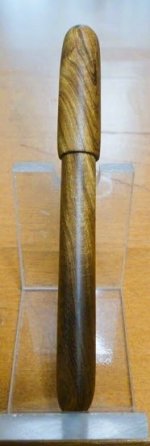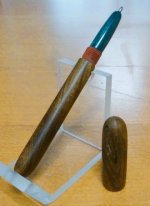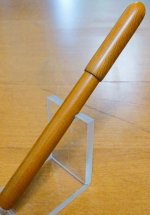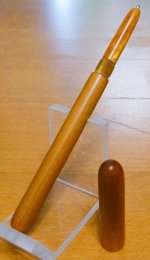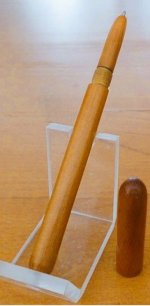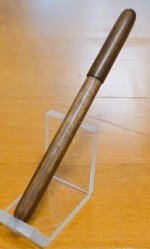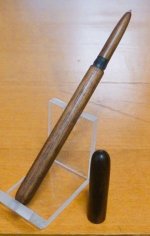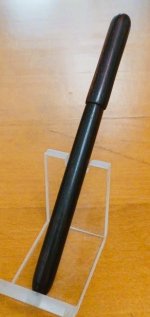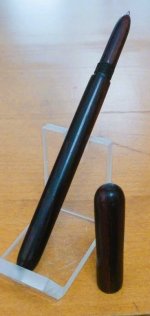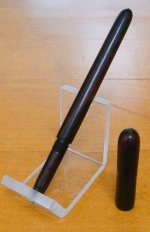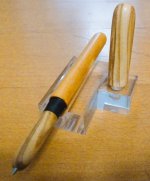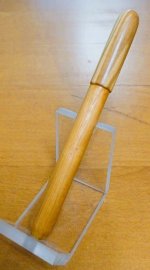NGLJ
Member
Although there are some very attractive plastic blanks available, I think that we all have a liking for wood. So I decided to see if I could make a wood plus plastic kitless. For simplicity, and because I prefer "slimmer" pens, I decided to start with a Cross style refill. It is not intended to be a "finished" pen, simply a "proof of concept" to learn from. The plastic is what I had laying around. All in all it didn't turn out too badly for my first attempt. If I was making a "keeper" I would go a little thicker on the cap, since I got a little too thin, and it chipped out. Same with barrel, but it didn't chip out. I would use black plastic, or whatever color goes best with the wood, which in this case is laburnum. The specific piece wasn't perhaps the best choice because laburnum is very hard when there is difficult grain, and can chip out. I am sufficiently encouraged that I will press ahead to try and refine the product.

